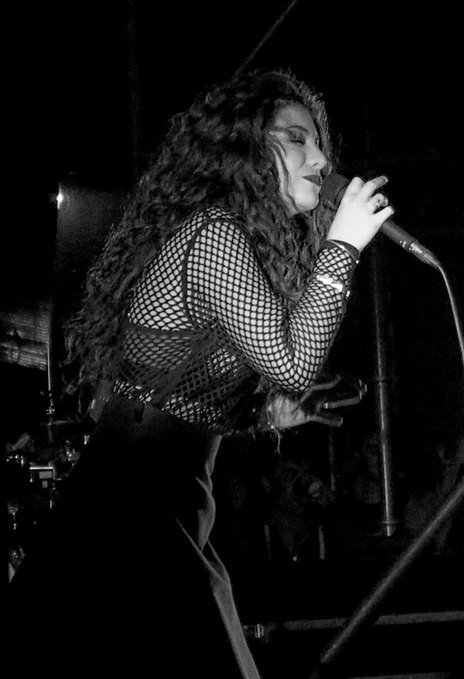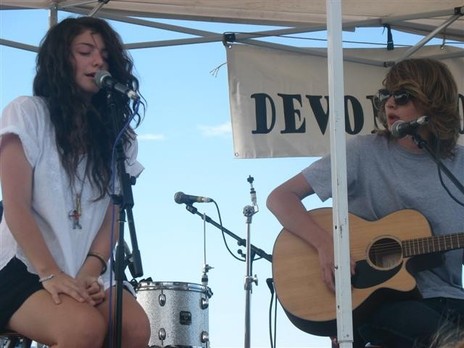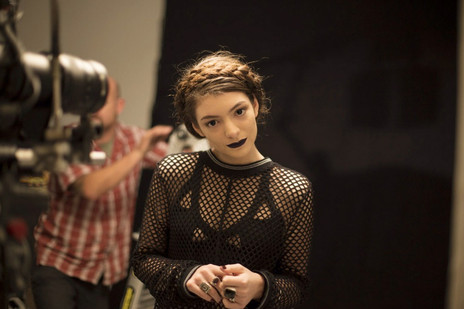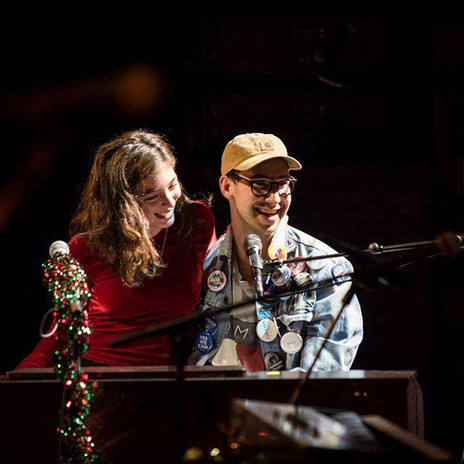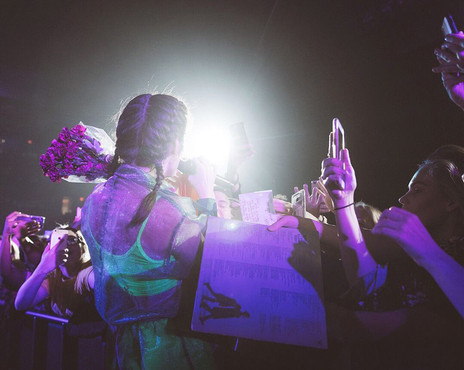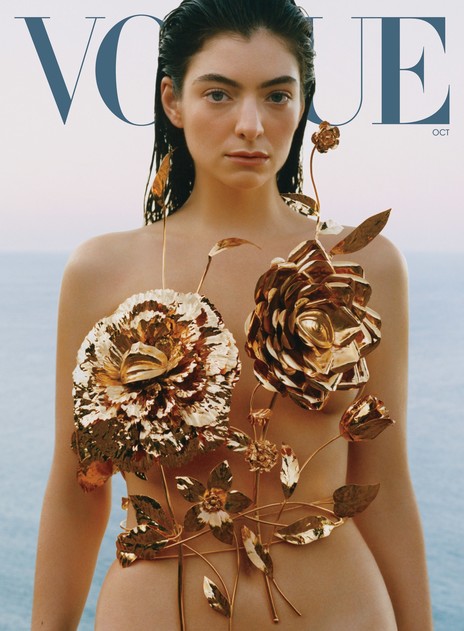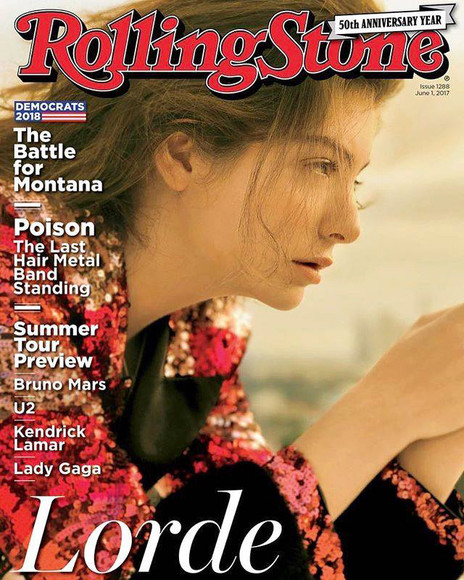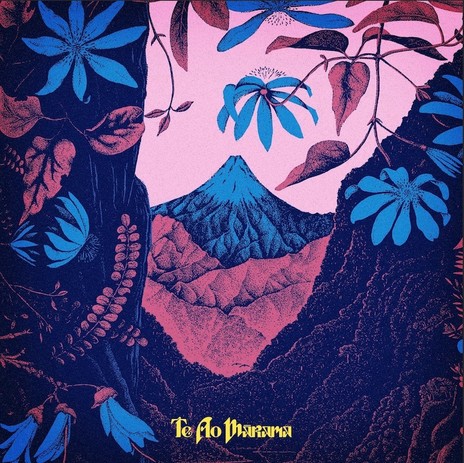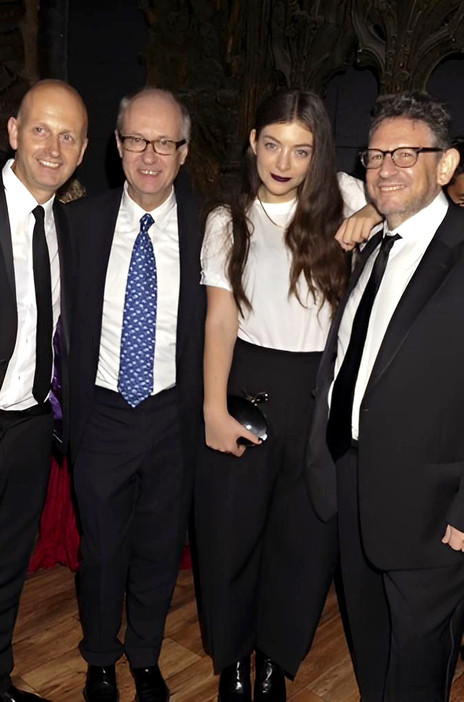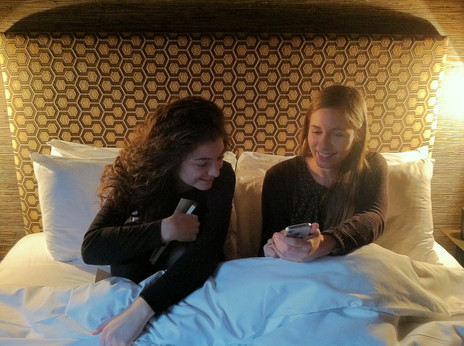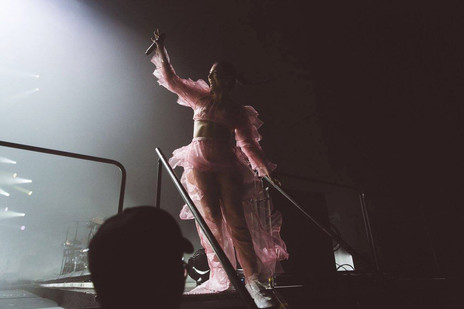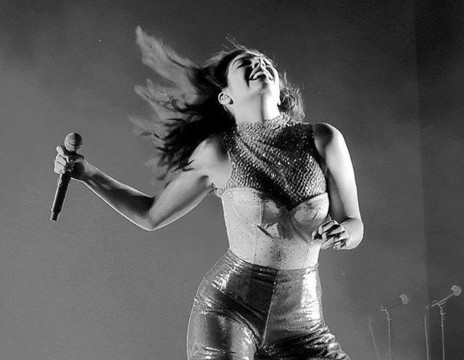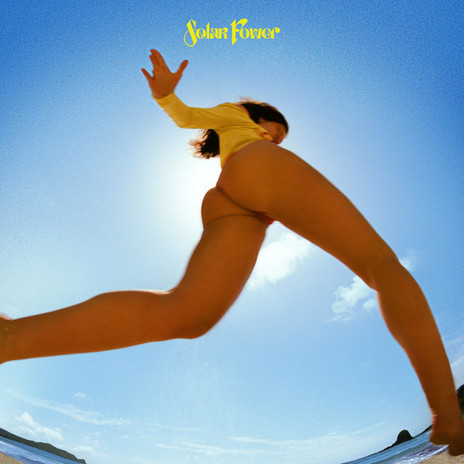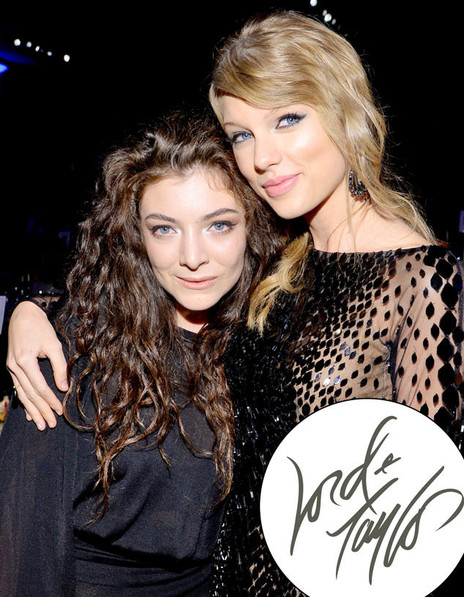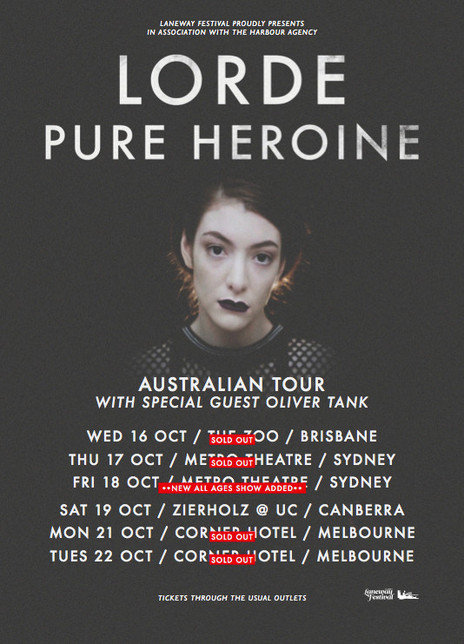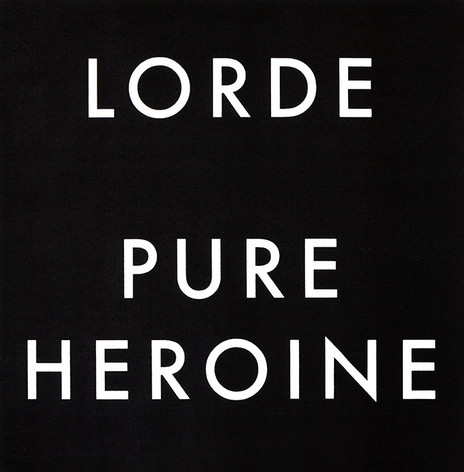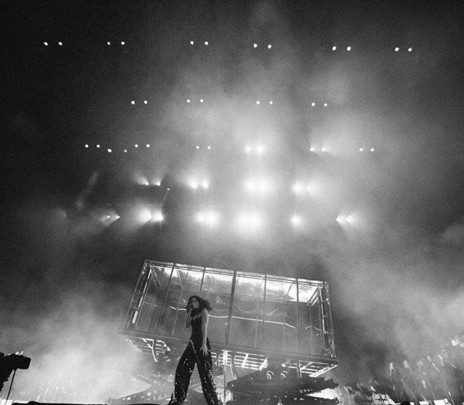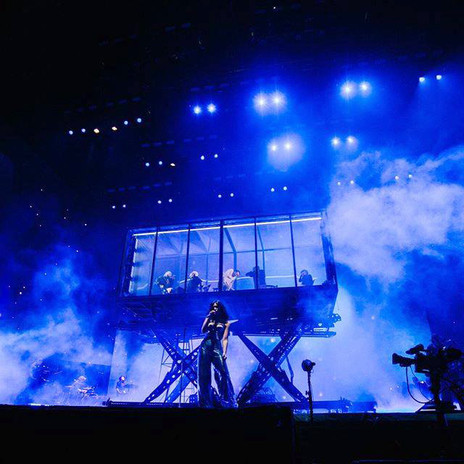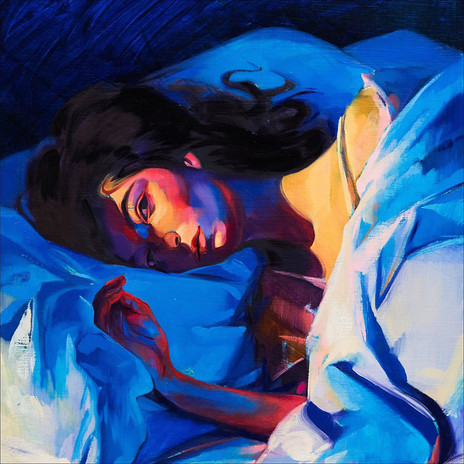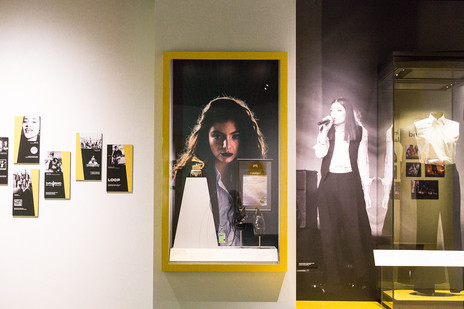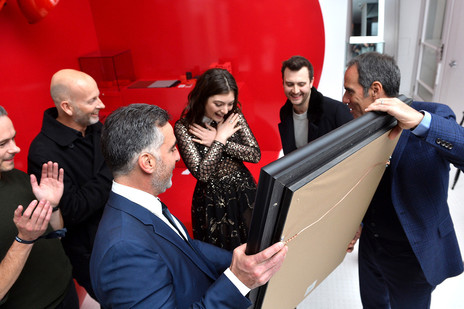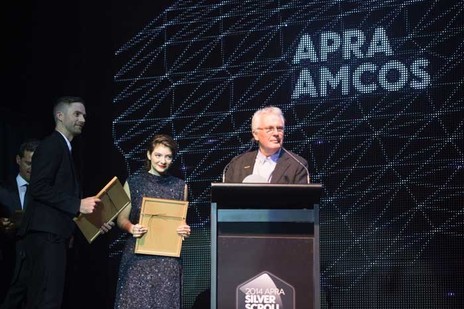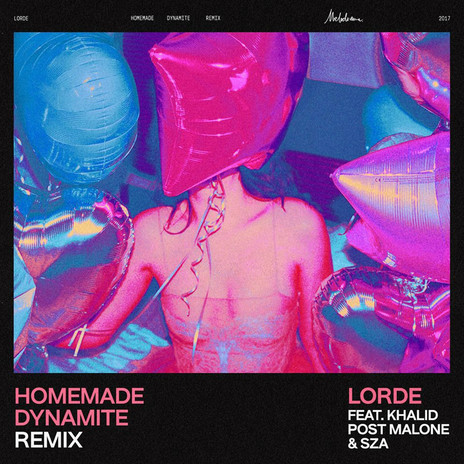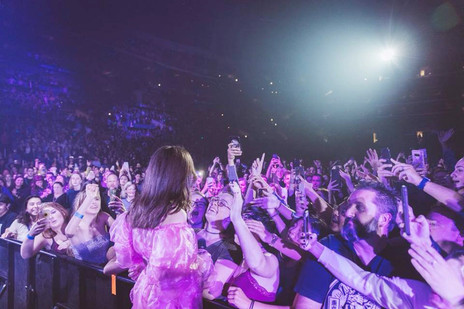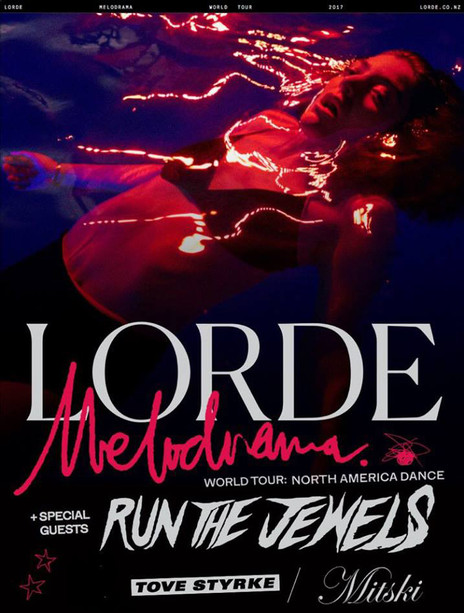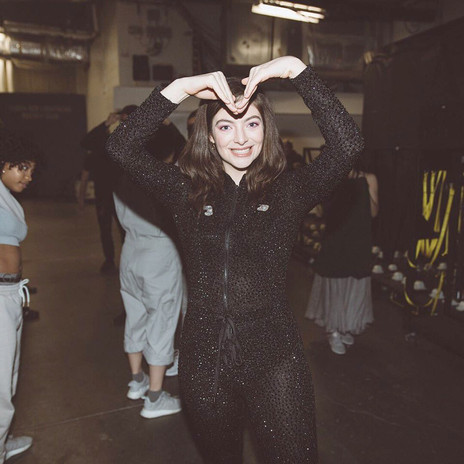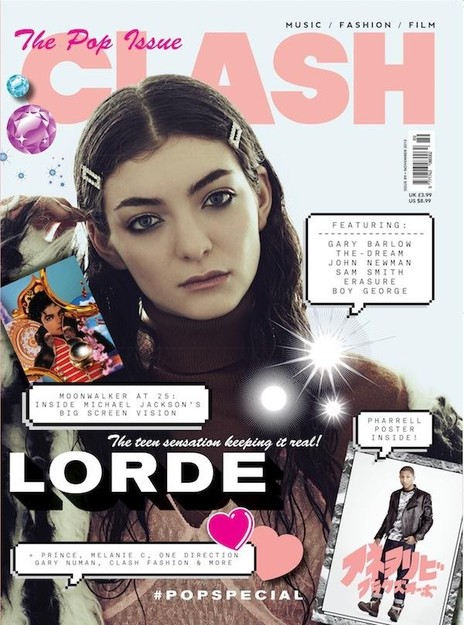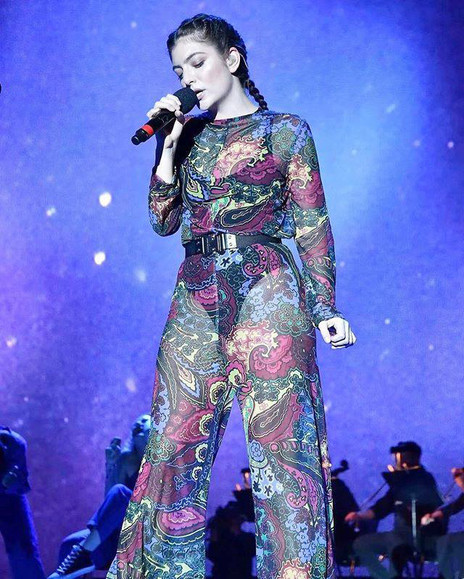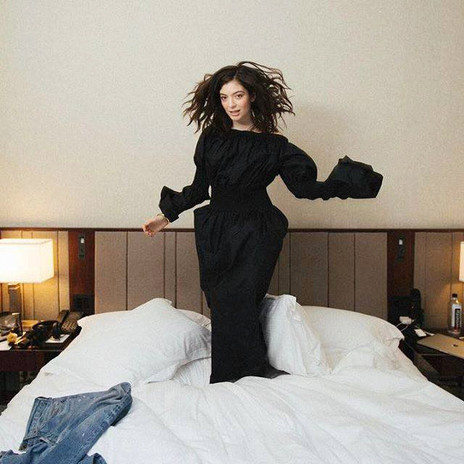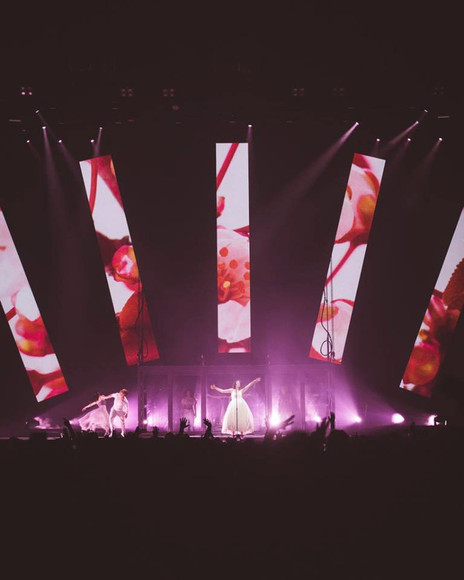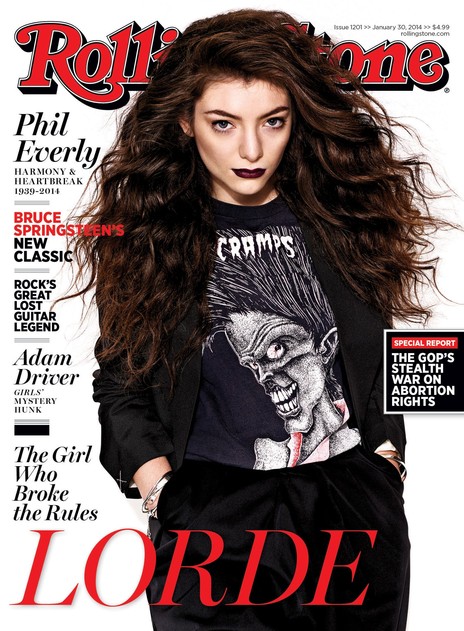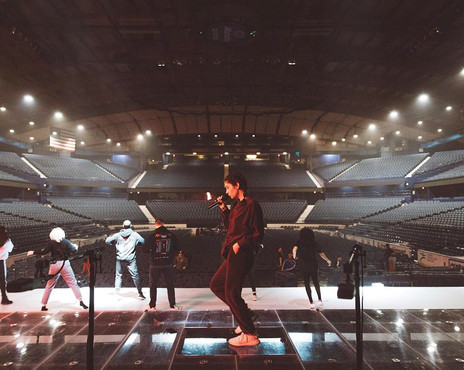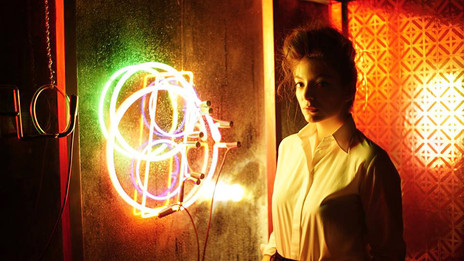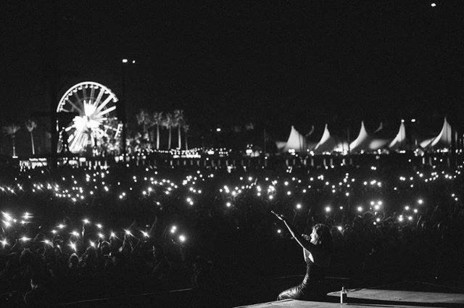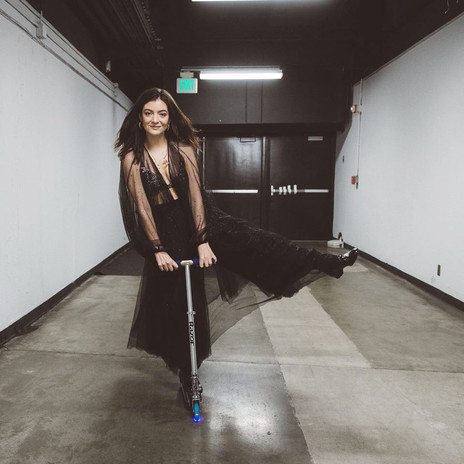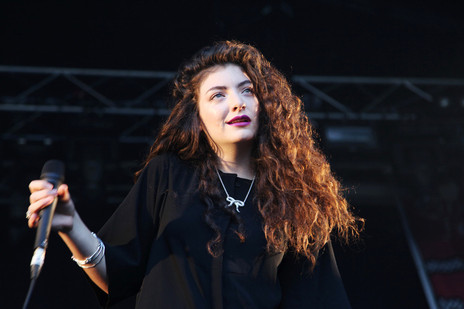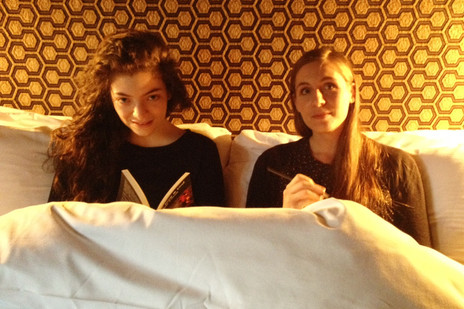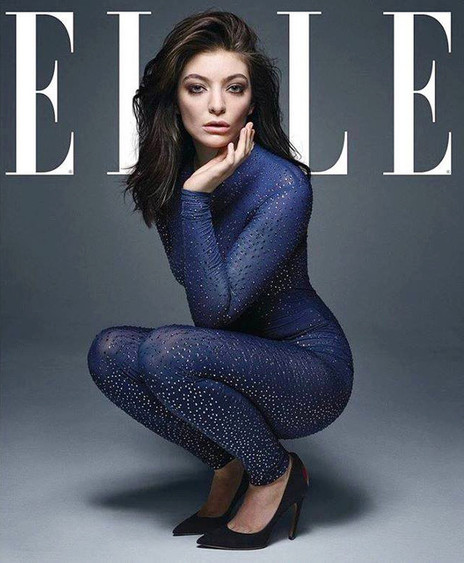She was a bright kid, exceptionally so, and exhibited natural creative drive from the get-go. Her parents championed her reading. “Mum tried to get me into poetry. But I wasn’t into it. I did read a lot of fiction” and – in her words – “a lot of shit”.
Ella was raised in Devonport, an established, middle-class neighbourhood. Her childhood had all the ingredients for a star arts pupil: books, music, encouragement, gallery visits, more books. She started writing short fiction, calling it a “hobby”. First there were words, then there was song, and her words would have stayed on a page if her performance instinct hadn’t kicked in. She needed a voice. Why did Ella go Pop? What has made her, arguably, New Zealand’s biggest pop export, ever?
The first recognition Ella received as a performer was winning the 2009 Belmont Intermediate School annual talent show, singing in a duo with musician friend, Louis McDonald. In August the same year the duo were invited to Radio New Zealand studios in downtown Auckland to chat and play some songs for Jim Mora’s Afternoon show on RNZ National. They covered Kings of Leon’s ‘Use Somebody’ and Pixie Lott’s ‘Mama Do (Uh oh, Uh oh)’.
This radio appearance was a big deal for two precocious, pre-teen kids. Louis’s proud dad sent a recording of the session, plus a few other tracks, to Scott Maclachlan, an A&R at Universal Music Group. Ella and Louis kept performing, playing gigs at cafes and the local theatre. Pictures of the 12-year-old Ella sitting on a stool next to her first bandmate are remarkable because … well there she is, it’s Lorde, exuding exactly the same poise as she has now.
What to do with a promising singer just entering her teens?
Maclachlan had received Louis’s dad’s tape and was impressed with the 12-year-old singer. Despite reservations, Ella’s parents agreed to bring Ella to a meeting to discuss possibilities. Prior to the meeting Maclachlan was thinking of pairing her with a established writer of pop songs, to get some airplay on commercial radio.
This idea didn’t last, Maclachlan told 3rd Degree. The 12 year-old’s “intelligence, charisma, vocals, ability, confidence, humility” made a big impression.
What to do with a promising singer just entering her teens? Ella wasn’t waiting for suggestions. Despite liking Maclachlan, she wasn’t about to take his not-subtle hint of studying up on the CD of classic 1960s hits he gave her as a parting gift: that was thrown in the bin. More meetings with UMG reps followed, and Ella was getting a feel for what the music business was like. She was later quoted saying about this period: “People would talk to my manager instead of me, until I would insert the kind of dry sentence that would make most adults splutter and blush and reach for their water. After that they would take me seriously.”
From 2010 to 2013 – while attending Takapuna Grammar – Ella led a dual life. Half the time she sat in a classroom like any other teenager, half the time she shook hands and discussed songwriting partners with heavyweight music reps. Her vocal range developed with the help of a singing teacher, making it a flexible tool to express those words she had banked.
She was writing lyrics, but was highly self-critical. She was discovering new music, The Animal Collective was an inspiration in more than one way: “Dad hated them!” Maclachlan was scouting around for a songwriter to pair her with, but finding it difficult. Between 2009 and 2011 Ella worked with several big pop names in New Zealand, among them Boh Runga, Karl Steven and Rikki Morris, laying the groundwork to establishing her own persona.
Morris remembers that in 2010 he was asked by Universal to record three demos with Ella, so they could hear what she sounded like “on tape” and how she responded to a studio environment. “Scott chose me to record Ella simply because I knew her – our daughters attended the same school,” Morris told AudioCulture in 2018. “I talked to Ella about the importance of finding someone her own age with whom she felt comfortable writing.” The demos Ella recorded with Morris were all cover versions: “‘Teardrop’ by Massive Attack (she nailed it!), a grungy version of ‘Rebel Rebel' and ‘Hey Hey, My My’ by Neil Young – all Ella’s choices from memory.
“Interestingly, Ella didn’t want to record any backing vocals!” says Morris. “Which, listening to ‘Royals’, makes no sense at all! I have to say, Ella deserves every success. Bright, determined, passionate, talented, lovely and above all, an incredible singer.”
Then, in December 2011 Maclachlan introduced her to Joel Little, who had been the singer of the band Goodnight Nurse, for whom he also wrote songs. They overcame the blind-date awkwardness of their first studio meeting when Little heard her sing. He recalled to the NZ Herald that Lorde had “a ridiculously good voice”.
Little was laidback, relaxed, and intensely interested in electronic music. They began a gentle process of trying to write songs. First efforts were labelled “shit”. Ella would meet Joel after school and, in school holidays, was just another Takapuna Grammar teenager whose mother would sometimes text at 10pm asking where the hell she was.
In a song called ‘Million Dollar Bills’ Ella described the juxtaposition between suburban teenage realities and a glittering, celebrity world. Joel worked on the song’s musical landscape, adjusting his methods to suit her voice, and letting the lyrics take centre stage. They spent 12 hours a day on the project. Slowly three, then four songs started to take shape. Ella had her laptop out at every opportunity, and there was one song that was close to her heart.
‘Royals’ started life as a minor concern: a mocking take on modern “aristocracy” through the eyes of an ordinary, suburban kid. In a VH1 interview Ella recalled seeing a photo in a National Geographic of “this dude ... just signing baseballs. He was a baseball player and his shirt said ‘Royals’. I was taken by the image and that word. It was all just really cool.”
She added sly digs at the standard hip-hop video excess, the “diamonds on your timepiece ...”
Ella and Joel soon realised that they had something, so she continued to work on it, marrying that image of American sporting celebrity with her fascination of historical figures. “The king and queens of 500 years ago, they were like the rock stars of today.”
She added sly digs at the standard hip-hop video excess, the “diamonds on your timepiece, jet planes, islands, tigers on a gold leash”. She wrapped it all up in a punk admission that hell we’ll only ever be dreamers but who cares when you can “drive Cadillacs” in them?
‘Royals’ is a song of suburban defiance, of bonding with the weirdos, freaks and geeks. It was a magnificent, adolescent eye roll at the so-called sexy winners, but contained those touches of poetry (torn up town, diamond in the flesh) that made it special. Like most great pop songs it was nuanced, but not obvious. On one hand it says, “forget those guys, come hang with us”, on the other Ella throws a secret glance at the glitz. It’s confident, the singer still rates her chances: “let me be your ruler”. It’s a lean musical landscape, finger clicks and doubled-up vocals. She had written her theme song.
Ella and Joel got the thumbs up from UMG and recorded her first EP in three weeks at Morningside studios. In November 2012, 15-year-old Lorde self-released The Love Club through her SoundCloud account for free download. UMG wanted to release ‘Royals’ as a single, and was aware of the SoundCloud idea, and it was the perfect approach for a savvy teenager who was keen to use all technology offered to introduce her work to the world.
She sat back and waited, assuming some friends would circulate it. In a matter of days it had been downloaded 10,000 times. Audiences got their first look at this young New Zealand pop singer with the song’s accompanying video. Directed by Joel Kefali, the ‘Royals’ video was inspired by conversations about being a teenager in Auckland; he used non-actors, friends of Ella’s who were asked if could “jerk around and do nothing for a day” while the cameras rolled.
In the New Zealand version Lorde is a sleepy-eyed, lion-maned heroine – but hers is more a cameo role. The camera slowly pans the near-empty bedrooms and living rooms of teenage boys, shadow boxing the afternoon away. It’s listless, frustrated and dreamy all at once. Within 24 hours of being loaded the video received 100,000 hits.
‘Royals’ became an international crossover hit, topping charts across the globe.
The success of ‘Royals’ grew exponentially. Lorde’s name was peppering Twitter feeds, and pop’s A-list, always twitchy about missing the next wave, were quick to add their praise. Her first “paying” gig as Lorde, pop star, was at the tiny Galatos bar in Auckland on 9 May 2013. The following night came another one, in the Mighty Mighty bar: a cosy, dearly departed venue in Wellington. Tickets for the Wellington reportedly sold out in 73 seconds; on the night, for the 140 people who packed the place, there was a sense of watching an important moment in New Zealand pop history unfold.
‘Royals’ became an international crossover hit, topping charts across the globe and making her the youngest solo artist to achieve a No.1 in the US Billboard Hot 100 since 1987 when shopping-mall teenage sensation Tiffany held the spot. The last time a New Zealand pop act hit No.1 in the US was 1996, when OMC’s singular ‘How Bizarre’ swept the world. But Lorde’s story would be as far removed as possible from OMC’s thwarted potential. With this achievement alone, Lorde was already in a select group of New Zealand musicians.
The buzz around the young artist and her first full-length album Pure Heroine was something that hadn’t happened to a New Zealand artist for years, if ever. Here was the real thing: a self-aware, aloof but goofy teenage girl who had read nearly any book you cared to mention, and could write other pop stars under the table. She didn’t seem to buckle under pressure, and with the kind of attention she was getting that is remarkable in itself.
Her parents would often be seated at award shows and accompany her to photo shoots, and you had to remind yourself that as self-assured as she was, Ella was a teenager. Back home, New Zealand swooned. Her achievements were reported on the TV news, there were appearances on iconic US shows like Saturday Night Live and the Late Show with David Letterman, she dropped memorable quotes in magazine feature interviews, her shows were reviewed enthusiastically – and the narrative was being written.
Pure Heroine topped the charts in New Zealand and Australia, it reached top five in Ireland, Canada, Norway and the UK and hit No.3 on the US Billboard Top 100. By the end of 2013 it has sold over 1.3 million copies. The single ‘Team’ would be a Top 10 hit, worldwide, and ‘Tennis Court’ would top New Zealand charts.
Both songs covered similar lyrical territory: a smart suburban girl assessing her world, being both a part of and apart from her friends and their concerns. Both songs were littered with lyrical gems. “Let’s go down to the tennis court/ and talk it up like yeah”. The irony of her singing about “getting on my first plane” – when she had done that dozens of times in a matter of months – summed up the escalation into a new, public life.
At home ‘Royals’ won the 2013 APRA Silver Scroll award for Best Song, and in January 2014 Lorde was called up on stage twice to receive Grammys, for Best Pop Solo Performance and Song of the Year. Joel Little joined her onstage to receive the Best Song gong, and they made a dark, self-deprecating pair, Ella purple-lipped and wearing high necked black satin, Joel blinking around at the theatre packed to capacity with names and faces. “We gave away this song for free,” he said – as much to himself as the crowd.
My first thought on watching the ‘Royals’ video for the first time was “New Zealand’s Kate Bush!” Probably to do with the hair and the stare, and the fact that I’m old enough to remember Kate high kicking it through dry ice and transforming into a Russian warrior queen. But it’s also to do with dance. She doesn’t just sing her songs, she moves them, spikey, heartfelt moves that are clearly not worked to death in front of a mirror or under the gaze of an exacting choreographer. Kate Bush was given flack for her “kookiness” and Ella has attracted her fair share of detractors who find her dance stylings a bit too rich for their liking.
I watched her and thought yes! Here’s something for girls and boys with secret, bohemian dreams: pass the scarf, light the incense, push the sofa back and go. Here’s a Kiwi Kate, a singular creation, here is a young woman’s voice that reaches right out from the radio and the laptop, self-confident and sure of her story. And there are similarities: both discovered young, both from close, liberal arts-focussed families, both “hot-housed” before any singles were released. And the hair! The stare.
But the similarities ended there. At heart Kate Bush is a character actor, she took you to story-book places. Her teenage writing dwelt in the meta-physical, hauntings, whale songs and Peter Pan. She was, and is, completely unpredictable in her subject matter, contrary and fantastical. Ella is a diarist and covers well-worn territory, yet this might be an even harder feat to pull off, many singer-songwriters draw from their own lives but few can look down a boring, middle-class street and write lyrics that are succinct but contain depths.
For all her skill and the success of Pure Heroine, Ella’s story could have stalled very easily after that Grammy win. Once admitted into top-level pop stardom, the clock is ticking: there’s always another young star about to break through. And this is what top level stardom looked like: David Bowie with his arm around her saying “listening to you felt like listening to tomorrow”. (He is often misquoted as calling her “the future of music”. She was louche on her first Rolling Stone cover in January 2014, wearing a Cramps T-shirt, and chatted about her friendship with the mega-watt hit machine Taylor Swift on this and that talk show.
The same year she was asked to curate the soundtrack for the hit ‘Hunger Games’ film franchise.
The same year she was asked to curate the soundtrack for the hugely successful Hunger Games film franchise, and ‘Yellow Flicker Beat’ was her offering. She used electronica and her own striking imagery to conjure the world view of female warrior Katniss Everdene. Kanye West jumped on board to co-produce a remix, and nominations for Best Original Song from the Golden Globes and the 20th Critic’s Choice Awards followed.
After Bowie’s shock death in 2016, Lorde took to the stage at the BRIT awards to join pianist Mike Garson commemorating Bowie’s life work.She was elegant and composed in Thin White Duke black and white, an original girl with “mousey hair” singing ‘(Is There) Life On Mars?’.
Bowie fans flooded the internet with praise. Lorde was now everyone’s go-to for cool. Bruce Springsteen covered ‘Royals’ at his 2014 Auckland show, and in Christchurch in 2017 she covered him right back with ‘I’m On Fire’.
This kind of recognition would make any artist sweat at night. To say that expectations for her second album were high is an understatement. But the expectation surrounding her second album Melodrama has been sated. Lorde has cemented her status as New Zealand’s biggest pop export, ever.
Ella chose top pop producer Jack Antonoff (Taylor Swift, Fun) to co-write and co-produce Melodrama. (Joel co-wrote ‘Green Light’ with Jack and Ella and co-produced ‘Supercut’ with them.)
Written and produced in New York, the city and its night-life colour Melodrama, an album that draws on first heartbreak and what happens when you go out, get out of it and wake up, dry-mouthed in “different bedrooms”. She’s trying “to find / perfect places”. It features some out-and-out club bangers, a big departure from the spare beats of her first album.
Suburbia is gone now and she’s been existing in different time zones and different clubs and parties: hanging out at the tennis court now could mean a Wimbledon after-party. Pure Heroine captured the world view of a smart, sceptical 16-year-old girl – but that kind of debut only happens once. What else could Melodrama be about but the huge sea change of finally leading the glamorous adult life Ella wondered about, and riffing on the question: is it all that?
The first single ‘Green Light’was teased out months before the album’s release; on 2 March 2017 music critics everywhere were poised over their keyboards. She opens the song describing putting on “make-up in somebody else’s car”. Right away you’re wondering who that somebody is. ‘Green Light’ traces a night out after a recent break-up, and the stories we tell our heartbroken selves: “She thinks you like the beach, you’re such a damn liar.” Midway through the song she perfectly heralds the whole shift of her life since she began writing: “I hear sounds in my mind/ brand new sounds in my mind”.
And in the background a “house piano” comes storming in, picking the song up and into the club, ripe for dancing. This is a dancing-by-yourself anthem, and with it all my Kate Bush dreams rushed back, because dancing is release and Melodrama is the album that celebrates that. In performance Lorde can’t help but spin and rock out when ‘Green Light’ kicks it up to second gear, and all the girls – and boys – dancing by themselves in their bedrooms whoop for joy.
Okay it’s not in a field, with Marcel Marceau mime moves, but it reminds us of Kate’s continual movement. The video can only have one plot: Ella dejected then Ella triumphant, rocking out on the roof of her Uber (the driver is very patient) and looking ahead to the New Her, fearless and dancing like she wants to.
Melodrama is full of lines that make the listener pause. Ella’s voice is still front and centre, and loops in on itself in call-and-response lines, but apart from a few ballads the music is aimed at the dancefloor. ‘The Louvre’ and ‘Writer In The Dark’are particularly rich. ‘The Louvre’ opens with “summer slipped us underneath her tongue” and – in a throwback to ‘Royals’ – predicts that “they’ll hang us in the Louvre/ Down the back, but who cares, it’s still the Louvre”. ‘Writer In The Dark’could be the ultimate writer’s revenge song, and has a surprisingly (yes!) Kate Bush-like mid-section with Ella’s voice swooping up and away: “I love you/ till they call the cops on me”.
Each new listen reveals a line you missed before, a surprising progression. Melodrama is a pop record that retains enough spikiness to make you want to listen to the details of the songwriter’s heartbreak, and the timeworn observations that hangovers get boring. She records a time of excess: another night on the tiles won’t provide any answers but here we go, anyway. It’s relatable and unique; we’ve all got drunk and cried in bathrooms, but very few of us are pop prodigies.
The piano track ‘Liability’could have been a terrible woe-is-me pop star lament, but she nails it. It must be damn hard trying to date someone when people are calling you (thank you Lena Dunham) a voice of your generation. Ella watches herself falling for the wrong people but takes the ride anyway, and squirrels away the details for later. It’s Carly Simon of the digital age, and that’s no small achievement.
In August 2017 Lorde performed ‘Perfect Places’on the The Tonight Show hosted by Jimmy Fallon. The final song on Melodrama, ‘Perfect Places’is studded with sparkling lines. It’s just another grace-less night. For her Fallon performance she wore a white suit with a spray of crazy gypsophila taped to her back, like some kind of budget medieval saint. At the track’s chorus she launched into her heartfelt dancing, fiercely ripping the stalks out in handfuls. I don’t know what that means, but as a pop exclamation mark, it was brilliant.
Lorde had written a joyous pop banger, and pulled off the famous “difficult” second album.
For the first time in the history of the APRA Silver Scroll Awards, the 2017 finalists were all female. It was a fascinating gallery of Kiwi singer songwriters but there wasn’t much surprise when ‘Green Light’ won. Lorde had not only written a joyous pop banger, she had pulled off the famous “difficult” second album with aplomb.
Lorde is an establishment figure now, insofar as pop stars can be, but this role is not without hiccups. Her decision in 2018 to cancel her show in Tel Aviv on political grounds hit international headlines: a clutch of stars applauded her, while a high-profile rabbi took a full-page ad in the Washington Post to call her a “bigot”. She found herself at the centre of a debate about female representation in the music industry after she – the only woman on the 2017 Grammys album of the year shortlist – was also the only nominee not asked to perform for the ceremony.
Lorde took it like a pro, smiling for the camera but tweeting her defiance in a very Lorde way: wearing the words of New York feminist and poet Jenny Holzer sewn into her dress. A week later she took out a hand-written full page ad in the NZ Herald to say “thank you” to the public for “believing in female musicians”.
In a sort of rite of passage she accidentally committed her first crash-and-burn Instagram post in April 2018 in which a photo of a marble bathtub was captioned “I will always love you”. In the outrage – on Whitney Houston’s behalf – that followed, Lorde quickly responded with a mea culpa. “Extremely extremely poorly chosen quote. I’m so sorry for offending anyone — I hadn’t even put this together I was just excited to take a bath. I’m an idiot. Love Whitney forever and ever. Sorry again”.
Nevertheless Newshub ran a shock, horror headline. Welcome to the jungle of 21st century fame, please step away from your phone. She is dealing with her adulthood at high altitudes and whatever she does, or doesn’t do, is news, and now the public feel they know her.
No one knows whether New Zealand will produce another songwriter as fully rounded as Lorde appears to be, though it’s arrogant to assume it won’t happen. It’s almost scary to watch strong musical talent tackle stardom: the clichés are there for a reason. Her first chapter ends with worldwide fame, the second is getting even more interesting.
– Gabe McDonnell
2021: Solar Power and Te Ao Mārama, by Rosie Howells
Lorde, the pop-star avatar of Ella Yelich-O’Connor, released her third album Solar Power on August 20, 2021, to a debut spot of No.5 on the US Billboard 200 Chart. The album reached No.1 in New Zealand and Australia. Fans had been fully prompted of the album’s bold new direction, thanks to the three new singles. Two months earlier, the eponymous lead song was met with excitement – enjoying chart placements at home and abroad – but it was also met with a little surprise. The breezy, blissful and nature-worshipping ‘Solar Power’ was a clear departure from Lorde’s previously brooding and intense style, both in music and public image.
“I was so serious and shy and tough. And I think that coming home, having a second record under the belt, I just felt like I could relax and play,” she told Vogue in September. “I don’t know – something started to happen, and it was all to do with spending time outside.”
According to Yelich-O’Connor, making the decision to base herself in Aotearoa and quit social media, had a significant impact on her life and music – as well as swapping MDMA for marijuana.
Co-produced with the same producers of Melodrama, Jack Antonoff and Malay, Antonoff also shares co-writing credit with Yelich-O’Connor on Solar Power. The album moves away from the synth-heavy electro-pop of Pure Heroine (2013) and Melodrama (2017), into a gentler, more indie sound.
A four-star review from The Observer noted “Lorde has earned her wistful, floaty record” whilst a five-star NME review commented that she has crafted “another world-beater.” As could be expected, the shift was not without critique, and some publications such as The New Yorker and Stuff lamented the shift away from the punch and drama of her previous albums. Perhaps Variety sums up Lorde’s predicament best: “Does the drastic gear shift work? It does, although there’s no avoiding that it may divide a previous fan base that looked at her widow’s peak and imagined they saw a dagger ... But small things like this are quibbles in the face of how well Lorde has pulled off one of the more difficult stunts in pop music: making a happy album that’s a good album.”
In September of 2021, Lorde also released the accompanying Te Ao Mārama – a five-track EP of Solar Power songs translated into te reo Māori, with all proceeds going to the Forest and Bird and Te Hua Kawariki Charitable Trust. Dame Hinewehi Mohi, Sir Tīmoti Kāretu, Hana Mereraiha and Hēmi Kelly collaborated closely on all aspects of the work, including translation with Yelich-O’Connor, who is not fluent in the language.
“She [Yelich-O’Connor] really embraced this kaupapa and wanted to be able to express her New Zealand-ness through her songs. It was wonderful working with her,” Dame Hinewehi Mohi (Ngāti Kahungunu and Ngāi Tūhoe) told RNZ, where she also discussed the thoughtful process of translation: “You immediately have to start by dissecting the impetus of the song … Then concepts would be floated around of metaphors that related to the same things from a Māori perspective, but it’s about our nation and history and how we’ve come together as a people ... then [we employed] the onomatopoeic use of the [Māori] language to create the melody that’s in tune with the original.”
Te Ao Mārama, released a few days before Māori Language Week 2021, sparked discourse around such subjects as te reo Māori’s plight in mainstream media, and adoption of the language by non-Māori.
Speaking to Leonie Hayden at the Spinoff, Yelich-O’Connor discussed the “journey” that led her to the project. “I started writing about jumping off Bulli Point, which was something that my dad had done, his grandfather had done, and that I hope my children will do. That feeling of being in a body of water that you have a generational connection to … I was writing an album about the spiritual power of the natural world, specifically in the context of where we’re from, and I realised; oh, there’s a word for this – it’s kaitiakitanga.”
Describing an album release and the ensuing mania as “gnarly,” Yelich-O’Connor lives by a routine of intense productivity followed by deep rest – with her last hibernation period being the very inspiration for this new album.
On 22 April 2025, Lorde played her new single ‘What Was That’ to a crowd at Washington Square Park, in Greenwich Village, New York. The single was released two days later, in anticipation of her fourth album Virgin, scheduled to come out in June 2025. ‘What Was That’ became the first local single to top the Official Aotearoa Singles Chart in four years and the album also went to No.1.
